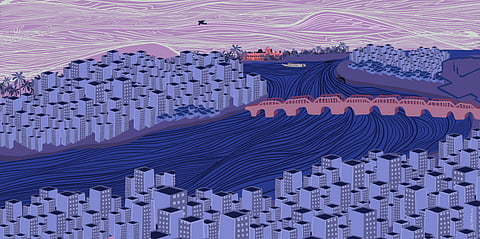(This interview is part of our special series 'Rethinking Bangladesh'. You can read the editorial note to the series here.)
Today, Southasia's leaders, analysts and scientists rightfully worry that climate events are shrinking coastlines and disappearing land masses in the Bay of Bengal. But there is a history to be charted to the current crisis.
In this interview, as part of our special series Rethinking Bangladesh, we speak with Debjani Bhattacharyya, author of Empire and Ecology in the Bengal Delta, about the effects of propertising and engineering the Bengal Delta, the histories of transformation that emerged from these mobile landscapes, the language of security around the Delta Vision 2020, and ramifications for land ownership and contemporary citizenship debates, among other topics.

